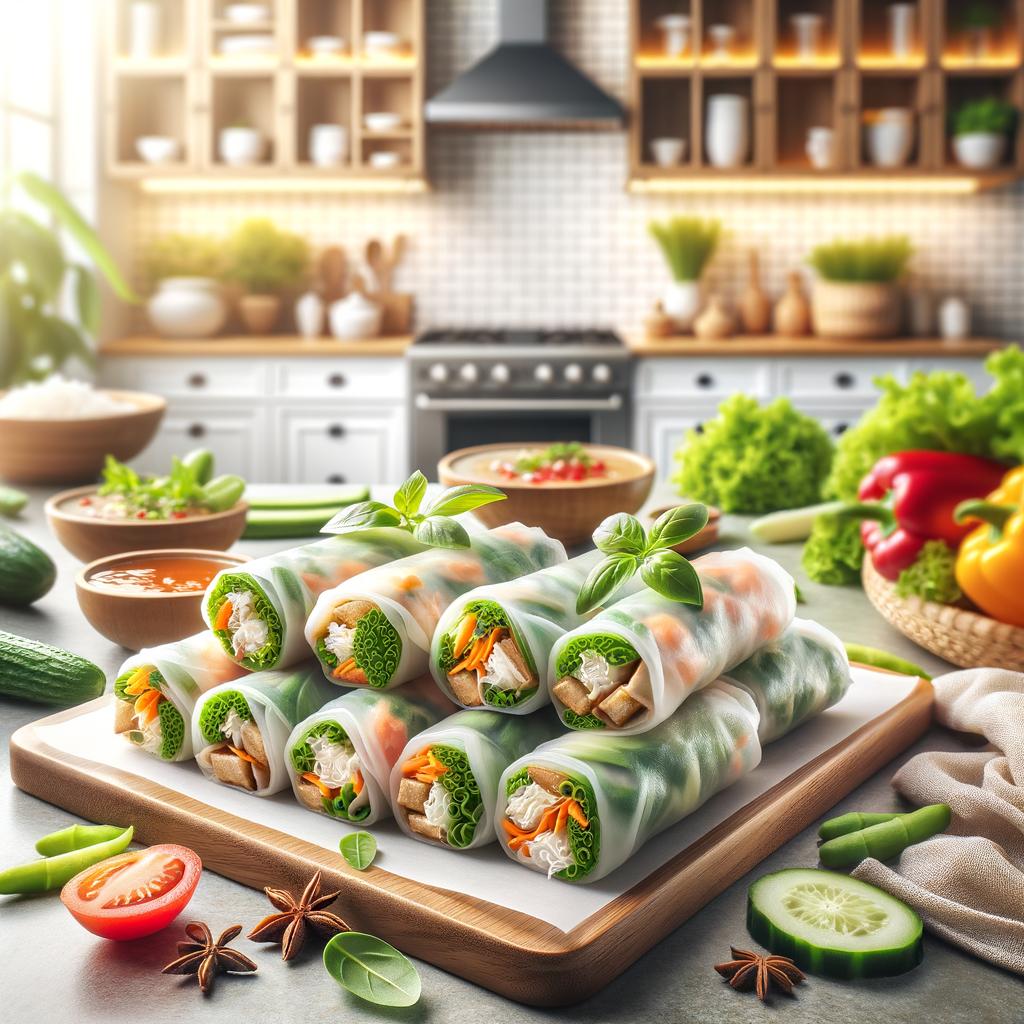Vietnamese Spring Rolls

Description Vietnamese spring rolls, also known as Gỏi cuốn, are an enchanting blend of vibrant colors, delicate textures, and a symphony of flavors. The translucent rice paper wrapping reveals the colorful ingredients within, like a stained glass window of food. The filling often consists of fresh, crisp vegetables, succulent shrimp, vermicelli noodles, and fragrant herbs. The texture is a delightful contrast between the soft, chewy rice paper and the crunchy, fresh fillings. The flavor profile is a harmonious balance of the five fundamental taste elements of Vietnamese cuisine: spicy, sour, bitter, salty, and sweet. The unique characteristic of Vietnamese spring rolls is their freshness, a stark contrast to their deep-fried counterparts.
Primary Uses Vietnamese spring rolls are a staple in Vietnamese cuisine, often served as an appetizer or a light, refreshing meal. They can be found in a variety of dishes across different cuisines, from traditional Vietnamese pho shops to high-end fusion restaurants. They are also a popular choice for health-conscious foodies due to their fresh ingredients and minimal use of oil. Beyond their culinary uses, they hold a special place in Vietnamese culture, often prepared during family gatherings, signifying unity and love.
History The history of Vietnamese spring rolls is as rich as their flavor. They originated in China and made their way to Vietnam during the period of Chinese domination. Over time, the Vietnamese adapted the recipe to their taste, incorporating local ingredients and flavors. During the Vietnam War, these rolls became a symbol of resilience and unity for the Vietnamese people. There's an old tale that tells of families gathering to make spring rolls during times of hardship, sharing the workload, and enjoying the fruits of their labor together. Over time, the popularity of these rolls has spread globally, with each culture adding its unique twist.
Nutritional Information Vietnamese spring rolls are a nutritionally balanced food. The rice paper is low in calories and fat, while the fillings provide a range of vitamins and minerals. The shrimp are a good source of protein and vitamin B12, while the vegetables provide dietary fiber, vitamin C, and a variety of antioxidants. Compared to deep-fried spring rolls, they are significantly lower in fat and calories, making them a healthier choice. However, like all foods, they should be consumed in moderation as part of a balanced diet. Enjoy the romance of each bite, knowing that you are nourishing your body with the love and history baked into each roll.

